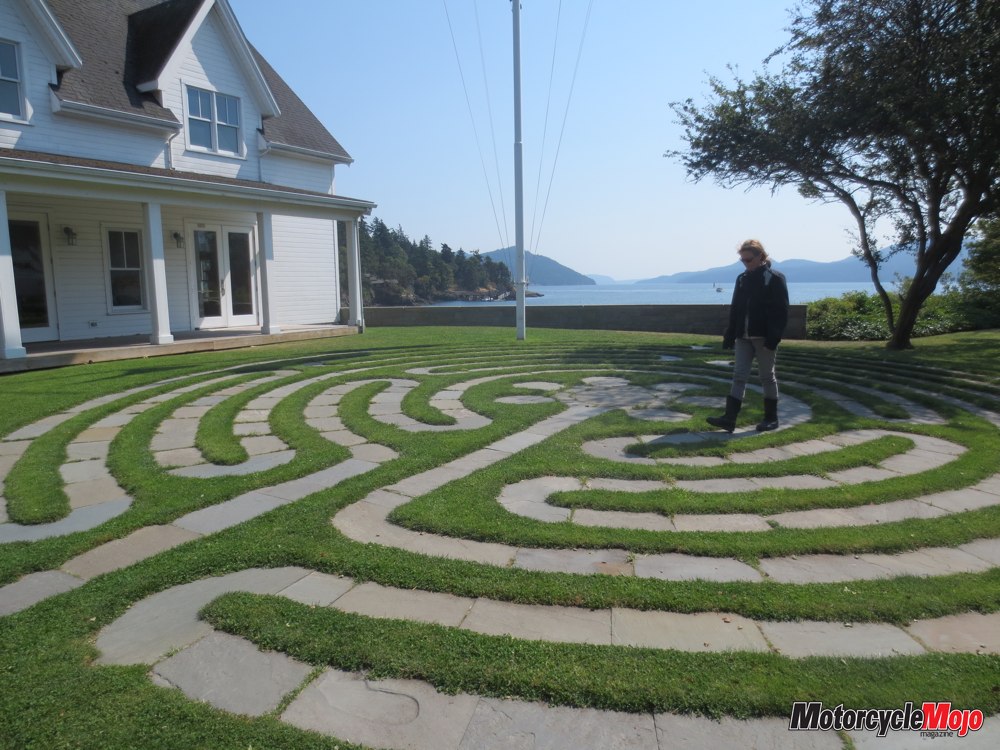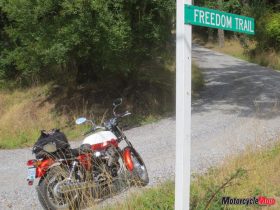Exploring island life, where living well takes precedence over living big
Midway between Vancouver Island and the State of Washington’s western coast lie the San Juan Islands. The hour-and-a-half ferry ride breezes by while scanning the waters in hopes of spotting a whale or porpoise breaching the surface. Despite being so close to home, it feels as if we’re headed somewhere far away, somewhere exotic.
My wife, Brenda, and I are en route to explore San Juan and Orcas Islands, the two largest landmasses in the San Juan archipelago. These islands are actually closer to Victoria, B.C., “as the crow flies” than B.C.’s Gulf Islands of Salt Spring, Pender, Mayne, Galiano and Saturna. Today, they offer a peace and tranquility that belies a past marred by conflict.
The Strait Line
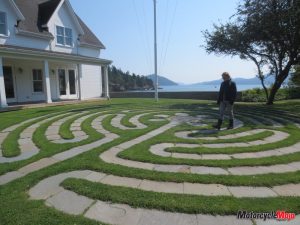 When the border between British North America and the United States was established in 1842, the boundary through the San Juan Islands remained in dispute. Where the mainland ended, the border was defined to run down the middle of the “navigable strait” between Vancouver Island and the mainland. But there are two such straits here: Haro to the west, and Rosario to the east. The San Juan Islands lie between them. Britain considered Rosario Strait to be the boundary, which put these islands in British jurisdiction. The Americans considered the boundary to be Haro Strait, which made these islands part of the United States.
When the border between British North America and the United States was established in 1842, the boundary through the San Juan Islands remained in dispute. Where the mainland ended, the border was defined to run down the middle of the “navigable strait” between Vancouver Island and the mainland. But there are two such straits here: Haro to the west, and Rosario to the east. The San Juan Islands lie between them. Britain considered Rosario Strait to be the boundary, which put these islands in British jurisdiction. The Americans considered the boundary to be Haro Strait, which made these islands part of the United States.
San Juan Island was inhabited at the time by a British naval base and a British-licensed Hudson’s Bay Company fort, as well as a dozen or so American homesteaders who were granted occupancy permits by the U.S. government. Nationalistic tempers flared when an HBC-owned pig wandered onto an American homesteader’s farm, and was shot by the American. The dispute centred on whether the pig was on British land or American land when it was killed. Was the pig trespassing, or was the settler? In response, America made an aggressive move to establish sovereignty. It sent in the army, which erected a camp at the opposite end of the island from the British naval base. Both countries now had a military presence on the island. War seemed imminent.
Cooler Heads Prevail
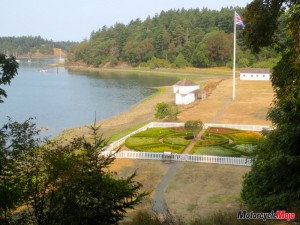 Tensions mounted as American and British warships squared off at Cattle Point, adjacent to the American army base, but no shots were ever fired. Instead, the two countries agreed to occupy San Juan Island concurrently until the border issue could be sorted out. They eventually agreed to have an arbitrator, the then king of Prussia, decide which strait was properly intended as the border in the Oregon Treaty, and to be bound by his decision. Haro Strait won out, leaving the San Juan Islands to America.
Tensions mounted as American and British warships squared off at Cattle Point, adjacent to the American army base, but no shots were ever fired. Instead, the two countries agreed to occupy San Juan Island concurrently until the border issue could be sorted out. They eventually agreed to have an arbitrator, the then king of Prussia, decide which strait was properly intended as the border in the Oregon Treaty, and to be bound by his decision. Haro Strait won out, leaving the San Juan Islands to America.
National Historical Parks are situated at both former military bases on San Juan Island. The parks’ staff relay the lesson from this so-called Pig War that disputes between nations can sometimes be resolved peacefully using diplomacy. That message accorded with the tone of our whole visit. These islands are definitely peaceful – the nationalistic tensions of the past long forgotten. Mind you, that’s not much consolation for the pig.
Peaceful Pace
Peaceful is just what we were looking for when Brenda and I decided to take our bikes on a leisurely trip close to our home in Victoria. Brenda rode her Suzuki TU250X and I was on my Moto Guzzi V7 Special. Both are classically styled standards, best suited for slower-paced adventures, as we have no fairings, windscreens or panniers for these bikes. During our five-night trip, we travelled light, each with a small bag strapped to the pillion seat.
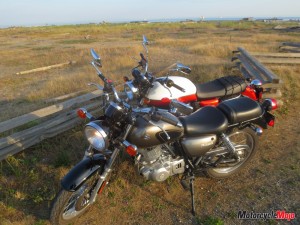 Our bikes were well matched to these islands: they are light and nimble, perfect for rural roads. Speed limits top out at 70 km/h on San Juan Island, and 55 km/h on Orcas Island – nobody went any faster than the posted limit the whole time we were there. This isn’t the kind of place where you need to be in a hurry to get around. And if you tried going quicker, you would raise the ire of residents and visitors alike.
Our bikes were well matched to these islands: they are light and nimble, perfect for rural roads. Speed limits top out at 70 km/h on San Juan Island, and 55 km/h on Orcas Island – nobody went any faster than the posted limit the whole time we were there. This isn’t the kind of place where you need to be in a hurry to get around. And if you tried going quicker, you would raise the ire of residents and visitors alike.
These islands offer more scenery than you could shake two sticks at: quaint farms, rustic buildings, charming resorts and winding country roads lead to sweeping beaches and rocky cliffs. Old-growth forests of fir, cedar and arbutus nurture populations of deer and rabbit seen bounding along the roadside, while high above, soaring eagles keep an ever-vigilant watch.
These islands aren’t big; you could cross either of them from tip to tip in less than an hour. But we still clocked 600 km on them in four days of riding. And that left lots of time to visit parks and interpretive sites, cafés and restaurants, a Saturday public market and some artisan stores. We also had plenty of time to sleep in, soak in the hot pool at the resort and sit on the shore with a glass of wine at the end of the day. These islands have a certain grace about them, an elegance that requires you to pace yourself and absorb your surroundings.
The View From Here
There are some very nice stretches of road, and all are in very good shape. Mount Constitution on Orcas Island has a road to its 730-metre summit, with a handful of tight hairpins thrown in to keep you honest. Cattle Point Road on San Juan Island runs through the middle of a broad grassland that slopes down to the sea with lazy, sweeping curves and endless views before delivering you to South Beach, a kilometer-and-a-half long beach strewn with driftwood logs. Large steel fire pits let you enjoy a beach fire while scanning the sea for whales. The day we arrived, a resident pod of orcas was feeding on salmon right off the cliffs at Lime Kiln Point State Park, appropriately nicknamed “Whale Watch Park.” Our bikes attracted a lot of attention. They are a little offbeat, but fit right in with all the air-cooled VWs and curvy old farm trucks that still motor along the roads as they did in decades long past. Vehicle traffic everywhere was light, even though it was late August, at the height of the tourist season.
There were lots of people around, but that didn’t translate into congested roads. The bicycles on the road often outnumbered the cars. When you get to a vacation town, you’ll usually find a realty office smack in the middle. Visitors can’t help but look at the property listings and wonder what it would be like to live there. The listings are loaded with superlatives meant to fuel your desire – Nestled! Designer Kitchen! Steps to the beach! You’ll find those same realty offices on these islands, but with a difference: multiple exclamation points and grand endorsements don’t really fit here. People don’t display their wealth by living opulently. This is a place where you earn the respect of your neighbours by growing your own food and using solar energy to power your home. The emphasis is on living well, rather than living big. The property listings here tend to include descriptions like Yoga studio, Reclaimed wood flooring, On-site composting – without a lot of exclamation points.
Rustic Chic
That doesn’t mean you’ll miss out on the good life, as there are plenty of opportunities to treat yourself. There’s no shortage of fine dining, featuring entrées and desserts inspired by local ingredients that are likely to be organic, free-range, sustainable, fair trade, line caught or foraged. We ate very well on Orcas Island at two different places that grew their own produce, right next to the restaurant. Walking from the bikes to the table allowed us to catch a glimpse of what might later end up on our plates. You’ll soon take for granted the trappings of rustic-chic living as you ride along: winery – check; pottery studio – check; marina with rows of gleaming pleasure yachts – check, check. You might not think you need an alpaca wool toque before you set foot in the store, but you never know, especially when you see the very source of the wool grazing happily on the other side of the fence. The island lifestyle, its inhabitants and their charming features quickly grow on you.
Sitting at home as you read this, you might wonder, Do I really need an alpaca wool toque or locally foraged huckleberries in my dessert? Well, maybe you do. Or maybe you don’t. But once you get a taste of it, the island lifestyle feels pretty satisfying. Just ask anyone in the clothing-optional hot pool at the resort. Being here makes you feel more whole, more harmonious, more attuned to the natural rhythms of the world. And really, isn’t that what you look for when you ride? And if you find yourself back at home weeks later, dressing your sprout salad with marjoram-infused olive oil, well, that’s just fine. And if your friends look at you a little funny and worry that you’ve gone all New Age on them, well, that’s okay too. You’re still the same person. You’re still a biker. It’s just that you’ve been bitten by a different kind of bug. An earth-loving, soul-filling bug that only bites because you want it to.









